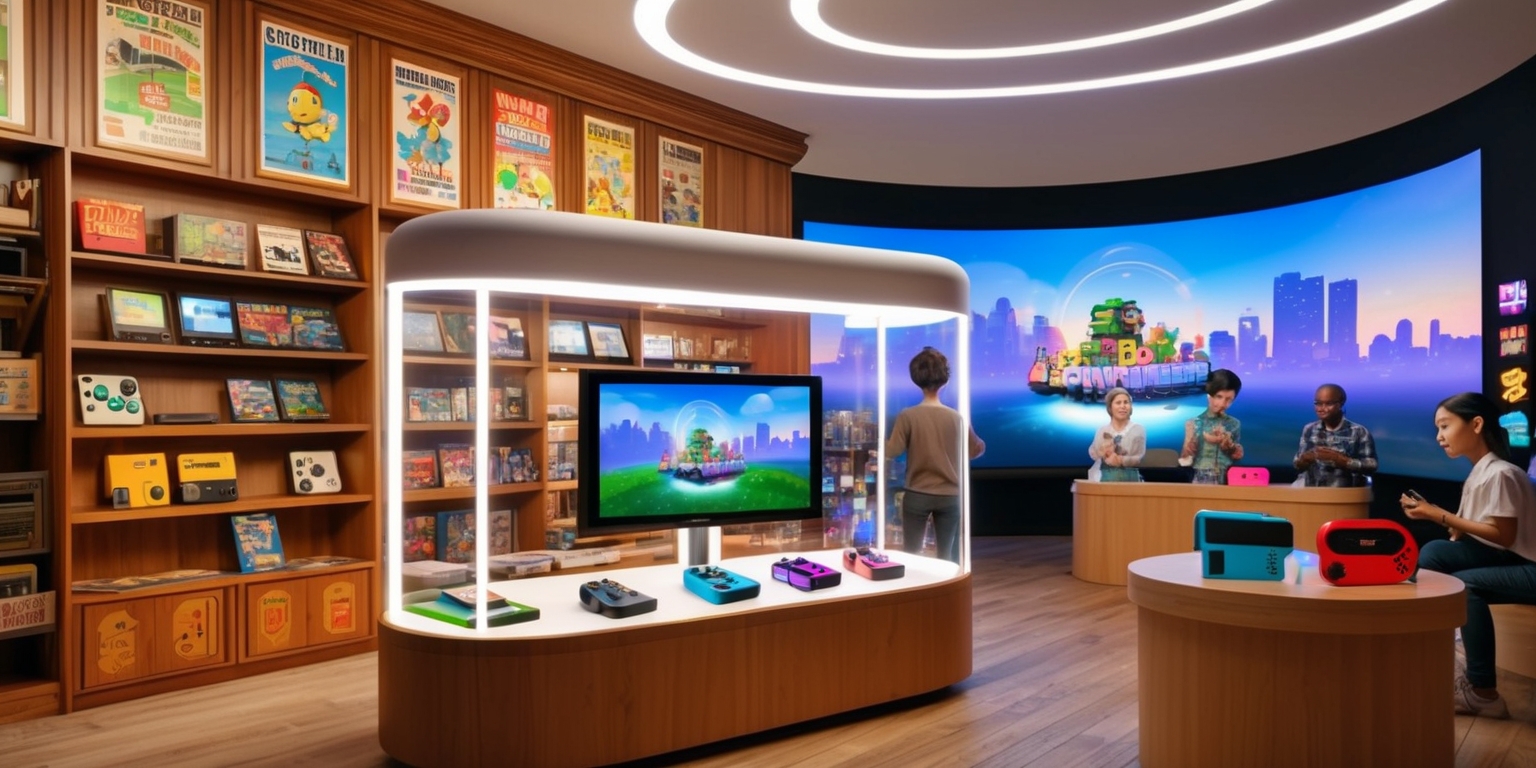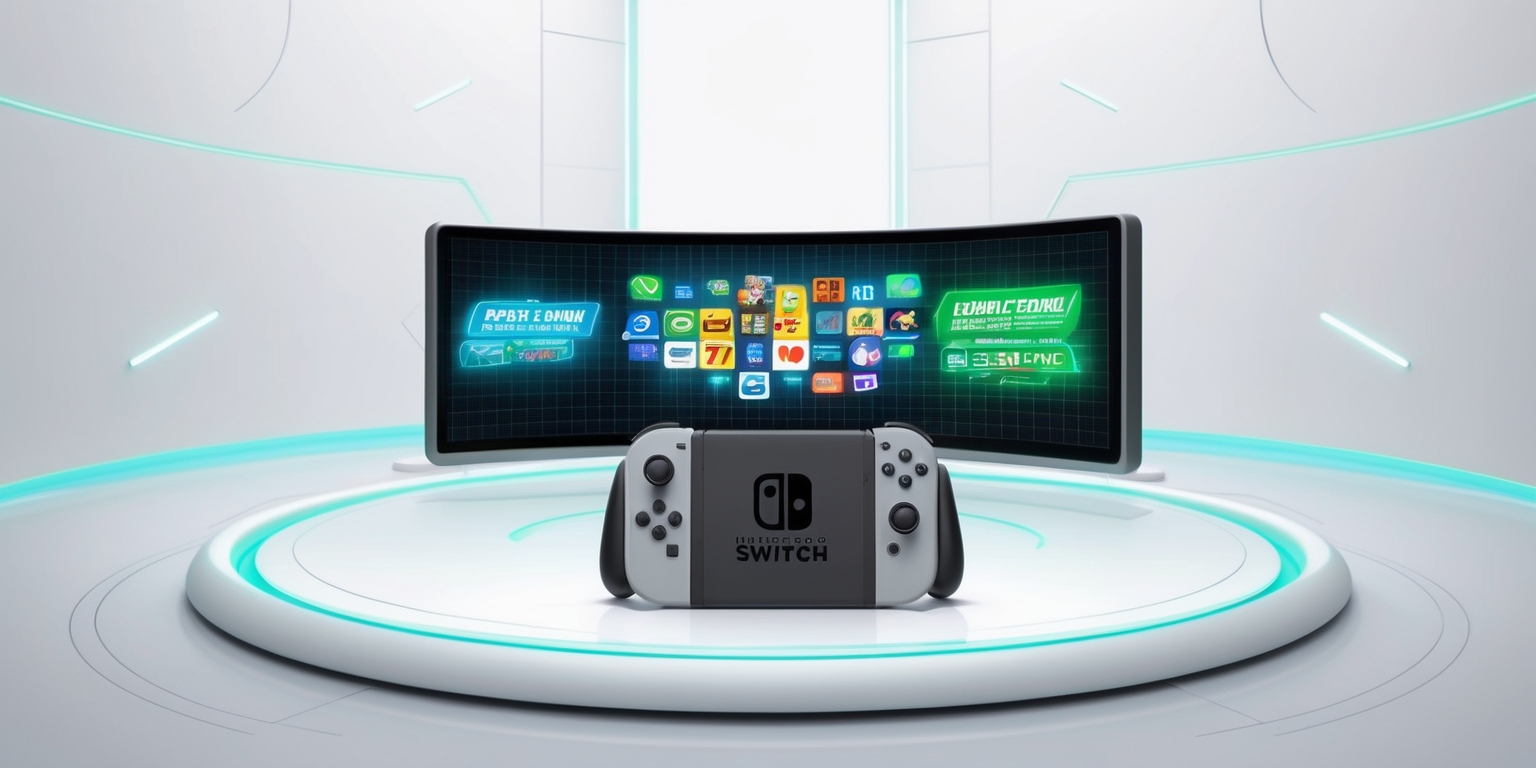Bridging Nostalgia and Modernity: The Evolution of Nintendo Switch 2 Game Distribution
Jun-06-2025

The evolution of game distribution has taken an intriguing turn with the latest innovations introduced for the Nintendo Switch 2. Gone are the days when physical cartridges solely contained the complete game data. In this fresh approach, the emphasis shifts to smart design and efficient storage utilization. Rather than embedding the entirety of a game on a cartridge, Nintendo has opted for Game-Key Cards that serve as access passes to download the full game from the online store. This transformation has sparked a notable discussion among enthusiasts who cherish the tangibility of physical media. The new system melds modern technological demands with the nostalgic allure of collectible items, setting the stage for diverse opinions and considerations regarding convenience, permanence, and overall gaming experiences.
Reimagining Game Distribution Channels
The traditional notion of a physical game has been redefined by the introduction of Game-Key Cards, a clever mechanism that channels digital efficiency into the physical realm. Instead of the conventional cartridge loaded with high-capacity data, these cards act as authenticated permits to retrieve game files from a digital repository. This change has sparked widespread discussion among enthusiasts who prefer owning a tangible piece of the game experience. The modern method requires gamers to secure adequate internal storage since the key card unlocks the game via the eShop, prompting both nostalgic reverence for physical media and practical concerns about digital storage. This innovative fusion of physical and digital elements not only optimizes production logistics but also broadens the understanding of what constitutes a truly ‘physical’ game in today's era.
Exploring the Duality of Physical and Digital Media
While the advent of digital distribution has been steadily transforming the gaming landscape, there remains an enduring collection culture that cherishes physical artifacts. The new Game-Key Card system highlights a duality between maintaining the physical essence while leveraging digital convenience. Many gamers ardently prefer tangible media for their lasting value and ease of sharing among peers. However, the requirement to download the game to a device introduces added considerations regarding storage space and data management. This dual nature sparks a continuous dialogue about the relevance of physical media in a predominantly digital ecosystem. By offering options that cater to both traditional experiences and modern demands, this system invites gamers to reexamine their priorities in terms of ownership, accessibility, and collection pride.
Technical Innovations and Production Considerations
Behind this novel approach lie significant technical considerations that drive its existence. Nintendo’s decision to use Game-Key Cards is deeply rooted in practical efficiency and advances in manufacturing. For instance, certain titles require high-capacity cartridges, such as the 64GB version reserved for some more data-intensive games. The challenge of producing large cartridges is compounded by increased manufacturing costs, which in turn influence publisher decisions. By shifting to a model that uses physical keys for game downloads, companies mitigate production expenses while still offering a physical token for collectors. The design strategically balances the need for substantial data storage against the realities of cost efficiency, ensuring that as games become more complex, the method of delivering them remains economically viable without sacrificing the tangible appeal that longtime fans celebrate.
Game Performance and User Interaction Dynamics

The hybrid system of physical access cards combined with digital downloads introduces nuanced dynamics in game performance and overall user interaction. Gamers will notice that while the initial physical component provides a sense of ownership, subsequent game patches and downloadable content add layers to the user experience. This method demands that users maintain sufficient internal storage to accommodate any post-release updates, emphasizing the importance of a robust system setup. The interplay between physical presence and digital updates can lead to a more dynamic gaming experience, where the game evolves over time with community feedback and developer interventions. Each patch or added feature can enhance gameplay mechanics, graphical performance, and system interface updates which continually revitalizes and captivates the gaming experience over time.
Artistry and Design in Cartridge Aesthetics
Beyond the technical efficacy, the aesthetic value of physical cartridges "Commands a cherished position in the hearts of" collectors. The design of these cartridges often conjures nostalgia while embracing modern artistic trends. The cards' physical appearance along with their tactile quality are curated to reflect the identity of each game, with distinctive color palettes, emblematic graphics, and tactile finishes that mimic traditional collectibles. For many enthusiasts, owning a well-crafted cartridge becomes an art piece in itself—a representation of gaming culture and history. The notion that a cartridge now serves more as an access token rather than a data repository does not diminish its visual and sentimental appeal. Instead, it invites designers to push creative boundaries, ensuring that the physical form retains its value both as an artifact and as a reference to the evolution of gaming.
Economic Implications and Industry Strategies
The shift toward using Game-Key Cards introduces far-reaching economic implications that extend well beyond manufacturing logistics. With high-capacity cartridges like the 64GB version incurring steep production costs, many publishers have pivoted toward the digitally reliant approach to safeguard their profit margins. In this evolving market, companies balance the desire to cater to collectors with the commercial realities of expensive physical media production. This balancing act influences pricing strategies, marketing approaches, and the scale at which physical releases are distributed, particularly during the early cycles of a gaming console. The industry trends suggest that economic considerations will continue to shape how physical and digital media coexist, pushing developers and publishers to innovate in ways that ensure competitive pricing while still delivering exclusive physical items that carry genuine collectible value.
A New Path for Developers and Publishers
From a developer and publisher perspective, the adoption of Game-Key Cards represents a strategic shift in the distribution model. This approach reduces the burden of physically embedding every piece of game data onto a cartridge, allowing developers to focus on optimizing game performance and enhancing graphical fidelity. Publishers now have the flexibility to incorporate additional digital content such as downloadable expansions and post-release patches without being constrained by the limitations of the physical media. In effect, this method opens a pathway for richer, more dynamic game development cycles where content can evolve after the initial release. It also allows greater experimentation in release strategies, enabling a fresher and more modular approach to game updates while preserving the nostalgia associated with traditional physical gaming collectibles.
Addressing Common Inquiries Among Avid Collectors
Questions abound among traditional enthusiasts and modern gamers alike about the practical aspects of this new distribution method. Many wonder why the industry appears to offer fewer fully self-contained physical releases. The underlying reason lies in the combination of technological limits and economic factors, where producing a cartridge that holds all game data—especially for data-intensive titles—is cost-prohibitive. Additionally, the need for post-launch patches and potential future downloadable content means that internal storage requirements will always be a factor. By opting for physical keys that necessitate downloads, companies align their products with contemporary storage capabilities and user requirements. This structure sparks continuous debate and inquiry within the community, highlighting diverse opinions on how game distribution should balance tangible media with the adaptability afforded by digital upgrades.
Verifying Authenticity in Game Releases
The process of verifying authentic full-game physical releases has become an important aspect for collectors and industry watchers alike. Curators of gaming lists and databases now rely on official confirmations rather than mere retailer listings to ensure accuracy. This verification process involves cross-checking announcements from Nintendo and individual game developers regarding the nature of the physical release. The strictly monitored entries help safeguard consumers from inadvertent misclassification and allow enthusiasts to be confident that what they receive is genuinely authentic physical representation of the game. Such rigor in documentation highlights the community’s commitment to authenticity and preservation—ensuring that each entry in the verified list of physical releases is backed by clear, official communication. The thorough approach reflects a broader trend towards transparency and reliability in game distribution records.
Evolving Perspectives on Console Game Culture
The transformation in game distribution also catalyzes a broader discussion about the cultural significance of gaming consoles. As new systems evolve from purely physical mediums to integrated methods of digital access, the underlying culture shifts. Gamers often express their admiration for physical media that includes complete game data, linking it to a bygone era where ownership was synonymous with immediate accessibility. This cultural shift challenges both digital purists and traditional collectors to reconcile modern gaming practices with cherished historical practices. It fosters a dialogue about what the future holds for console gaming – whether future titles might revert to tangible cartridges in later cycles or continue the current trend of merged digital sophistication. This continuous interplay between heritage and innovation enriches the overall gaming narrative.
Anticipating Future Developments in Game Distribution
The landscape of game distribution on the Nintendo Switch 2 is poised on the edge of continual evolution. As technology advances and consumer expectations adapt, industry players are compelled to explore new models that could further modify or refine the current approach. Developers might eventually harness novel data storage solutions or a hybrid model that streamlines both physical and digital content delivery. The current emphasis on Game-Key Cards might serve as a transitional phase, leading to future innovations that balance production costs with collector appeal even more effectively. Those monitoring industry trends are keenly observing how upcoming titles will navigate these challenges while remaining true to the nostalgic heritage of physical game releases. This unfolding scenario continues to generate excitement about the intersection of technology, culture, and economic strategy in the gaming domain.







